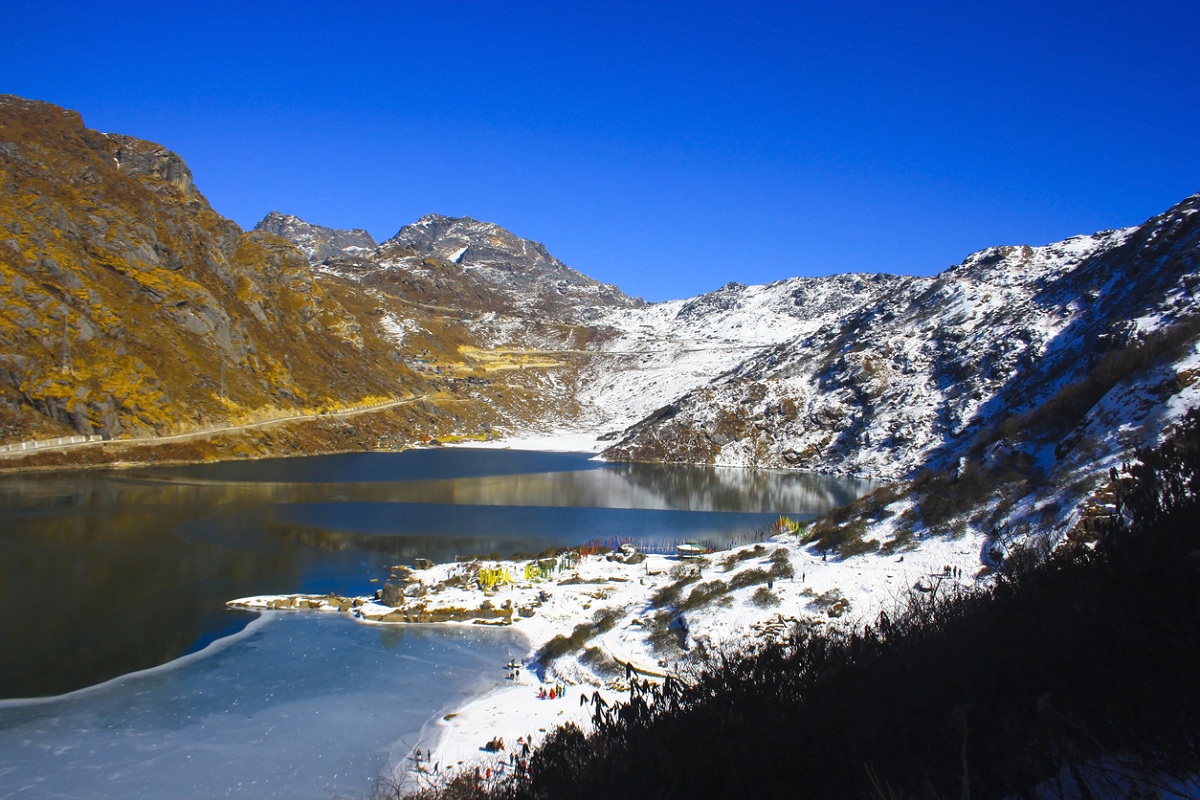During the billions of years of our planet’s existence, its climate has varied a lot. A longterm change in the Earth’s climate was felt with the advent of the Industrial Revolution, which may be said to have begun with James Watts’ development of the steam engine around 1780. As industrialization began to drive up the burning of fossil fuels in the developed world, carbon dioxide (CO2) levels in the atmosphere rose.
At first the rise was slow. It took about a century and a half to reach 315 ppm, moving outside the multi-millennial envelope. Accelerating during the twentieth century, levels reached 330 ppm by the mid-1970s, 360 ppm by the 1990s. On 25 November 2019, the World Meteorological Organization (WMO) declared that CO2 levels in the earth’s atmosphere had reached an all-time high of 407.8 ppm in 2018.
Advertisement
CO2 is, of course the principal ‘greenhouse gas(GHG)’ in the atmosphere, and the density of its ‘blanket’ plays a crucial and complex role in determining the Earth’s climate. This gas accounts for about 80 per cent of all GHGs in the atmosphere. The impacts of warming by GHGs are becoming ever more evident. The Intergovernmental Panel on Climate Change (IPCC) is unequivocal both about the current warming of the climate system and that the cause of most of the observed increase in global average temperatures is attributable to increase in anthropogenic GHG concentrations.
The average global temperature in 2020 was about 14.9 degrees C, 1.2 (0.1) degrees C above the pre-industrial (1850-1900) level. Under the 2015 Paris Agreement, nations set a target to limit global warming to 2 degrees C, with a more ambitious target of 1.5 degrees C. There is a broad scientific consensus that continued emissions at or above the current rate will cause further warming and induce many changes in the climate system during the 21st century that will likely to be larger, with more adverse impacts, than those seen during the 20th century.
For instance, a first-time global scale analysis done by the International Union of Forest Research Organisations shows that forests could become carbon sources, not sink, if temperatures continue to rise. The carbon storing capacity of global forests could be lost entirely if the earth heats up 2.5 degrees C above preindustrial levels. Under growing emissions scenarios, forests will have difficulty adapting to climate change, and droughts, insect invasions, fires and storms would cause widespread forest destruction, further accelerating climate change.
In the Amazon rainforest, just 20-40 per cent forest loss could lead to the tipping point being crossed. A study published in Nature estimates that 17 per cent of the forest has been lost in the past 50 years while the World Wildlife Fund (WWF) puts it at 20 per cent. WWF also predicts that forest loss at the current rate of deforestation will become 27 per cent by 2030. Just in August 2019, the Amazon in Brazil lost 0.9 million hectares of forest to fire. Climate scientists reported in Nature (27 November 2019) that there are as many as nine tipping points as defined by the IPCC that are more likely to be crossed sooner than previously thought due to climate change.
These tipping points are interconnected both biologically and physically in complex way. Loss of Amazon rainforest forest is one such example. Other tipping points are losses of the boreal forests, permafrost, Artic Sea ice, coral reefs, Atlantic circulation, Greenland ice sheets, Wilkes Basin East Antarctica ice and the West Antarctica ice sheet. In the words of Mona Alalawi, President of the Bahrain Women Association for HD, “It could be said that water supply is the ultimate victim of climate change, whether resulting in scarcity of water or floods.”
The delicate balance between evaporation and precipitation is the primary cycle through which impact of climate change on water security is felt. Globally, approximately 98 per cent of water is salty and only 2 percent is fresh. Of that 2 per cent, nearly 7/10th is available in the form of snow and ice, 30 percent is groundwater, less than 0.5 per cent is surface water (lakes, rivers etc.) and less than 0.05 percent is in the atmosphere. Climate change impacts are most felt through changing hydrological conditions including change in snow and ice dynamics.
The main one is that global warming causes polar ice to melt into the sea, which turns fresh water into sea water, although this has little direct effect on fresh water supply. Global water cycle ~ in which evaporation from oceans falls as precipitation on the land and flows back to the oceans through streams that become rivers ~ is being intensified and accelerated by climate change. The warmer oceans allow significantly more water vapour to evaporate. More important is the fact that warmer air holds more water vapour.
With so much water in the atmosphere, there is also more energy fueling the size and destructive power of the storms and heavier rainfall when the air cools. Although more rainfall can add to freshwater resources, heavier rainfall leads to more rapid movement of water from atmosphere back to the oceans, reducing its availability for storage and use. Warmer air causes melting of inland glaciers leading to increased water supply to rivers and lakes, but this will cease once these glaciers have melted.
Scientists have already measured an extra 4 percent of water vapour in the atmosphere above the oceans, and even though 4 percent does not sound like much, it has a large effect on the hydrological cycle. Because storms often reach out up to 2000 kilometers, they gather water vapour from large areas of the sky and funnel it inward into the regions where storms conditions trigger a downpour. By analogy, if we pull the drain in a bathtub filled with water, the water rushing down the drain comes from the whole tub. In the same way, the great basin of water vapour in the sky is funneled to the ‘drains’ opened above land by rainstorms and snowstorms.
When these basins are filled with more water vapour than in the past, the downpours are more intense. Bigger downpours lead to bigger floods. The floods rush across the land, eroding the soil. And less water seeps down through the soil to recharge the underground water. Climate change also drives desertification by altering atmospheric circulation patterns and drying out land.
Impacts of climate change on freshwater availability have been summarized in a report of the United Nations (2020): (1) Climate change is projected to increase the number of water-stressed regions and exacerbate shortage in already water-stressed regions; (2) By 2050, the number of people at risk of floods will increase from its current level of 1.2 billion to 1.6 billion. In the early to mid-2010s, 1.9 billion people, or 27 per cent of the global population, lived in potential severely water-scarce areas.
In 2050, this number will increase to 2.7 to 3.2 billion people, and (3) over a fifth of the world’s basins have recently experienced either rapid increases in their surface water area indicative of flooding, a growth in reservoirs and newly inundated lands, or rapid declines in surface water area indicating drying up of lakes, reservoirs, wetlands, floodplains and seasonal waterbodies. The World Economic Forum ranked water crisis at the top of its 2015 assessment of global risks with potential to cause damaging economic and social impacts across entire countries and sectors.
Living with climate change will mean coping with the impacts on water, whether too much or too little, and making it necessary to reduce the vulnerabilities of communities and economies. But humanity treads today on a slippery slope. As we continue to pump more GHGs in the air, we move onto a steeper, even more slippery incline. We seem oblivious to the danger ~ unaware how close we may be to a situation in which a catastrophic slip becomes practically unavoidable, a slip where we suddenly lose all control and are pulled into a torrential stream that hurls us over a precipice to our demise. All the threats discussed here have been recognised by many people of vision, the so-called doomsayers.
Here is what Albert Einstein wrote in 1947: “We are shrunk into one community with a common fate … Everyone is aware of that situation, but only a few act accordingly. Most people go on living their everyday life; half frightened, half indifferent, they behold a ghostly tragi-comedy that is being performed on the international stage. But on the stage, on which the actors under the floodlights play their ordained parts, our fate of tomorrow, life or death of the nations, is being decided.”
(The writer is a retired IAS officer)











